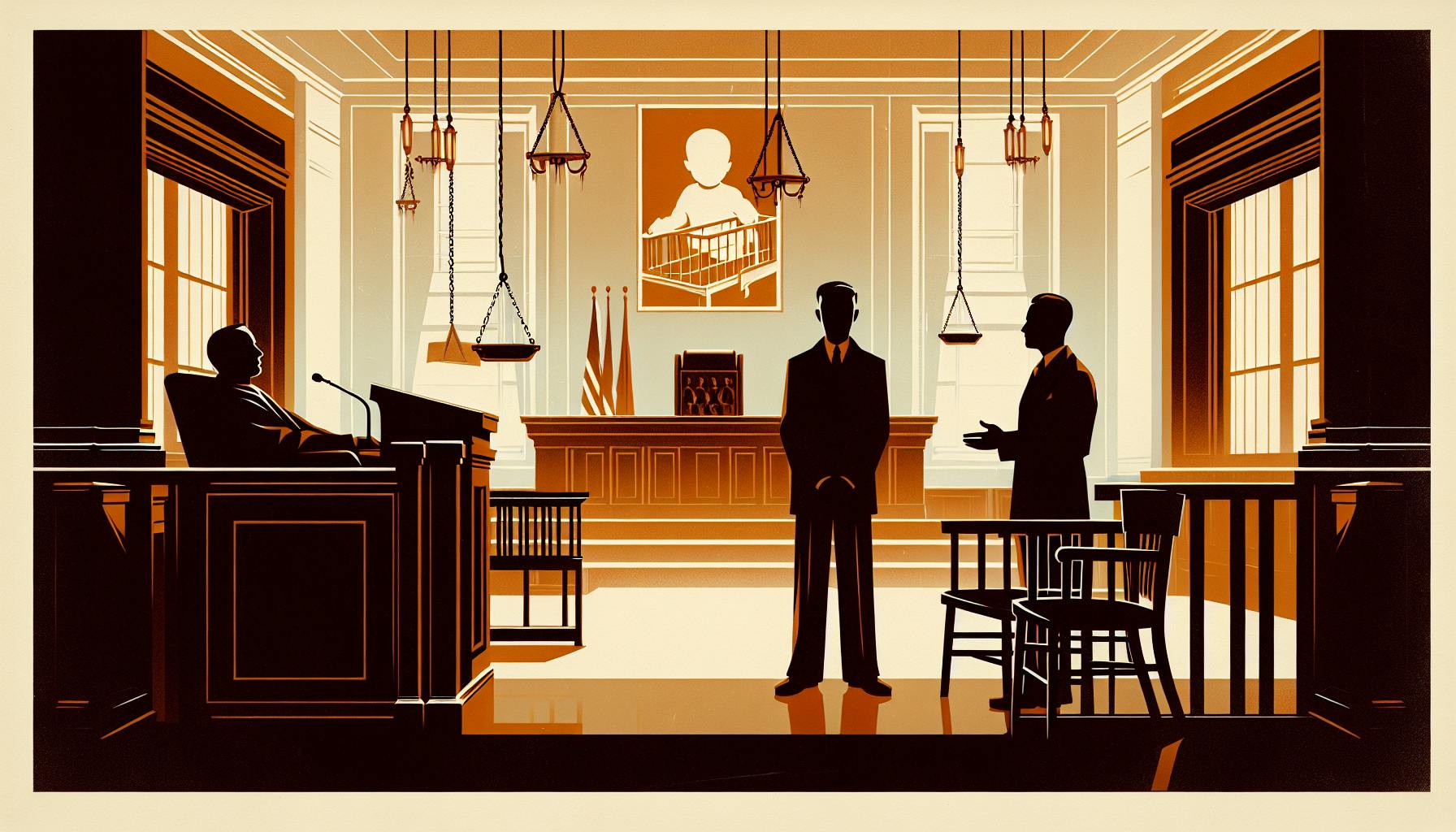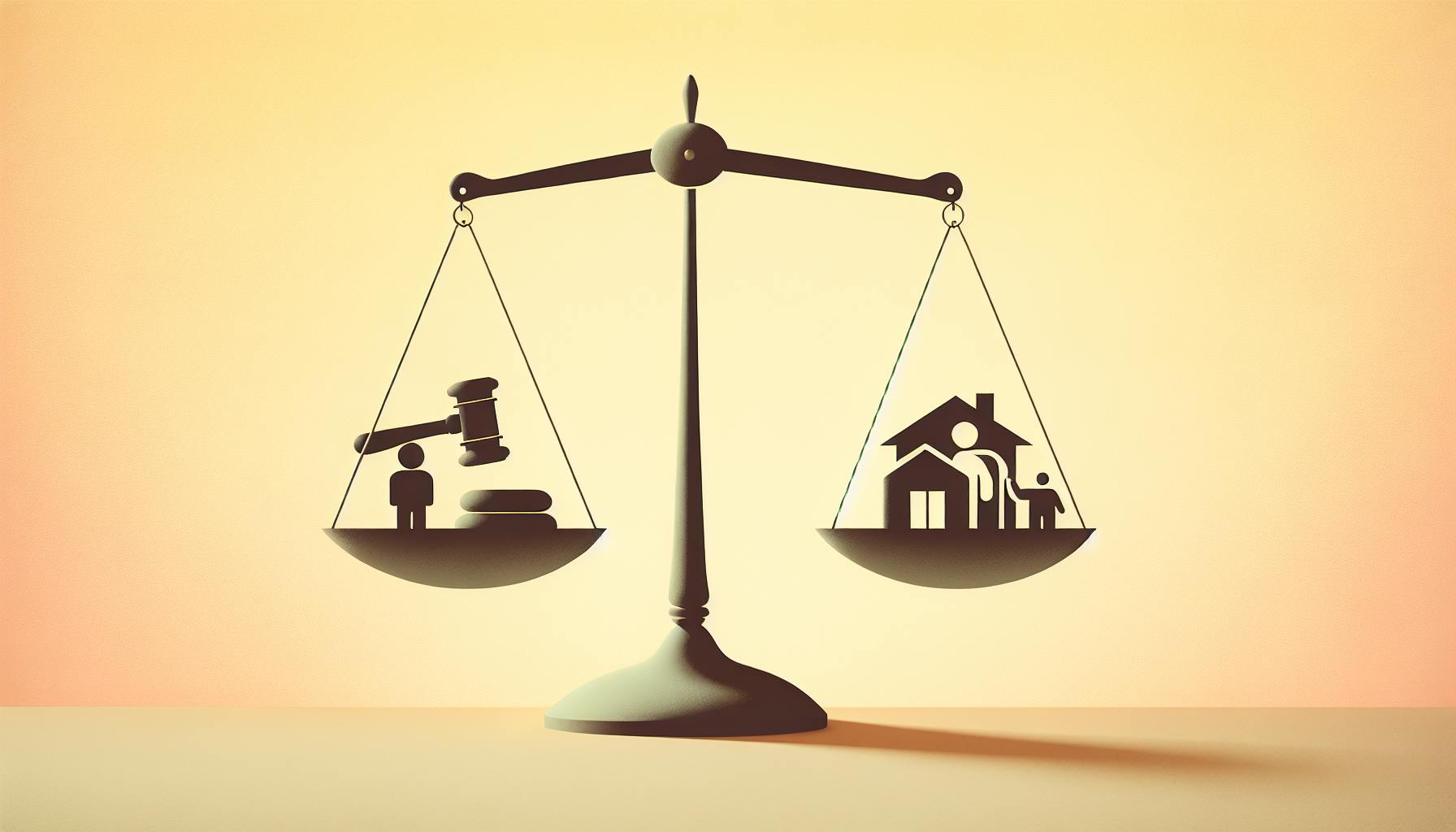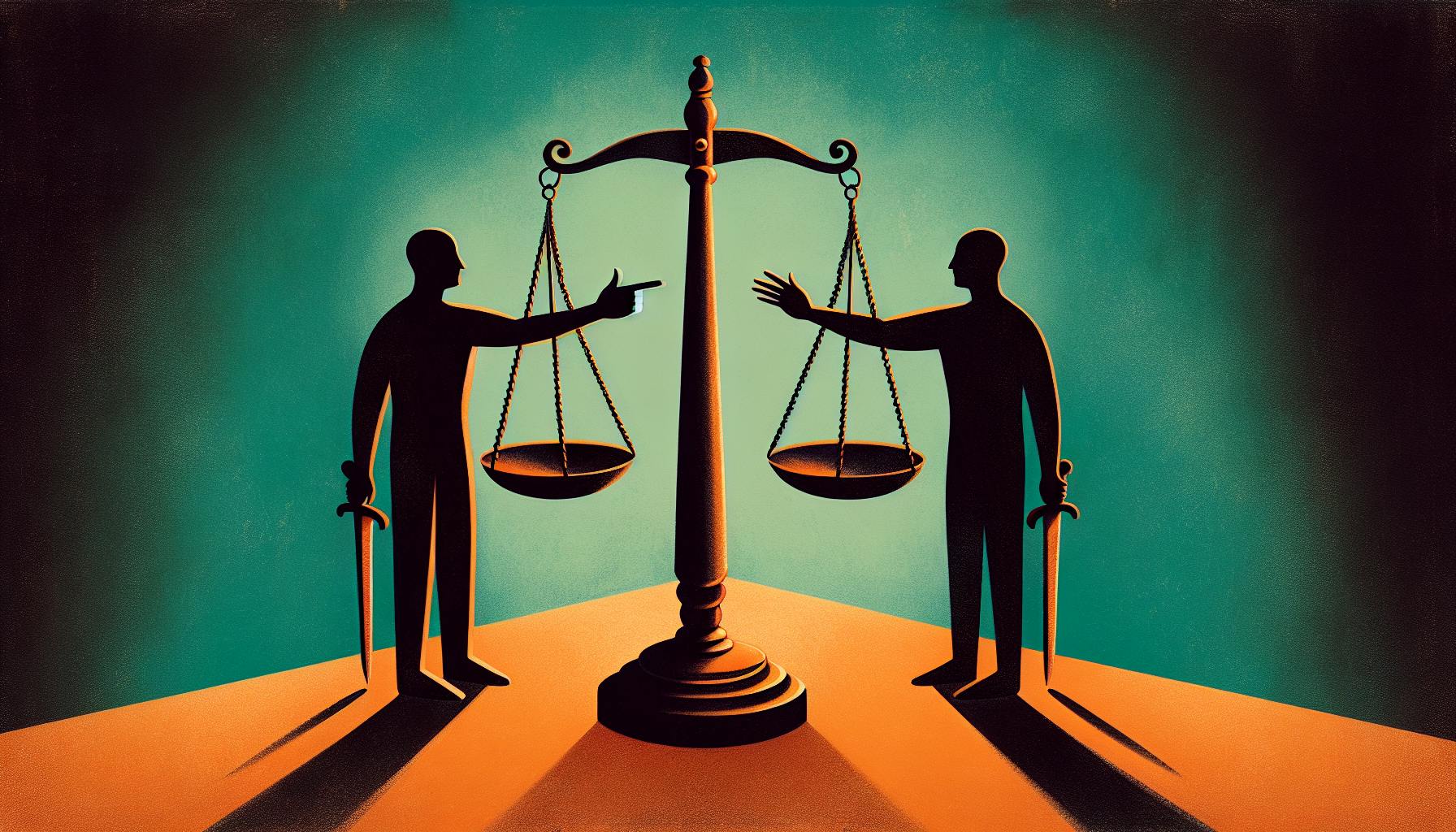We can all agree that clearly distinguishing between white-collar and blue-collar crimes is an important issue in the criminal justice system.
In this post, I will clearly define white-collar and blue-collar crimes, compare their key differences, and provide real-world examples to help readers better understand these classifications of criminal offenses.
You will learn the historical origins of these terms, explore what factors determine if a crime is white-collar or blue-collar, examine sentencing disparities, and review case studies of both types of crimes to gain essential insights for legal practitioners.
Introduction to Criminal Classifications
Defining White-Collar Crime and Blue-Collar Crime
White-collar crimes are non-violent crimes committed by individuals often in the course of their professional occupations. They include crimes like fraud, bribery, Ponzi schemes, insider trading, embezzlement, cybercrime, copyright infringement, money laundering, identity theft and forgery. Blue-collar crimes are typically more violent crimes committed by individuals of lower socioeconomic status, such as assault, robbery, burglary, theft, and vandalism.
Historical Perspectives: From Edwin Sutherland to Modern Views
The concepts of white-collar and blue-collar crime were coined in the 1940s by sociologist Edwin Sutherland, who studied crimes committed by corporations and higher class individuals. He brought awareness to the prevalence of white-collar crime and how it often goes undetected and unpunished compared to street crime. Views have evolved with globalization, the digital age, and complex financial systems revealing new forms of white-collar crimes.
Understanding the Stakes for Criminal Law and Enforcement
Distinguishing between white-collar and blue-collar crimes helps determine appropriate charges, enforcement protocols, and sentencing guidelines. It also assists agencies like the FBI in allocating resources and enables criminal defense lawyers to build targeted legal strategies based on the nature of offenses.
Comparing the Cost of White Collar Crime vs. Street Crime
While violent crimes elicit greater emotional distress, the economic damages caused by white-collar crimes far surpass those from blue-collar street crimes. However, many white-collar crimes go undetected, making statistical analysis challenging. Improved monitoring and reporting would reveal the true costs of white-collar offenses.
How are white collar crimes different from blue collar crimes?
White collar crimes refer to non-violent crimes typically committed by business professionals or public officials for financial gain. These crimes often involve complex methods such as embezzlement, insider trading, money laundering, Ponzi schemes, phishing scams, and more. White collar criminals tend to exploit their occupation, special skills, or privileged access to commit crimes.
In contrast, blue collar crimes refer to street-level crimes like theft, assault, burglary, vandalism, and drug crimes. These crimes often involve direct confrontation and violence. Blue collar criminals have no special skills, privileges, or access that enable them to commit crimes.
The main differences between white collar and blue collar crimes include:
- Type of criminal: White collar criminals are often respected business people or privileged officials who abuse their status. Blue collar criminals have no special status.
- Motive: White collar crimes are committed for financial gain. Blue collar crimes may be committed for money but also due to addiction, revenge, thrill-seeking, etc.
- Method: White collar crimes rely on deception, exploitation of trust, and technical skills. Blue collar crimes rely on confrontation, threats, violence.
- Impact: White collar crimes cause massive financial damage. Blue collar crimes often target individuals and cause localized damage.
- Detection: White collar crimes are complex and hard to detect. Blue collar crimes are more visible.
- Punishment: White collar criminals often receive lighter punishments compared to the damage caused. Punishments for blue collar crimes are generally harsher.
The terms "white collar" and "blue collar" originally referred to different types of occupations. A white collar job was typically an office job requiring specialized skills and education. A blue collar job referred to manual labor and did not require higher education. The terms were then extended to categorize different types of crimes.
What determines the classification behind a white collar crime?
White collar crimes are non-violent offenses committed by individuals, typically professionals or public officials, for personal or financial gain. The key factors that determine if a crime is classified as white collar include:
-
The offender's occupation or position: White collar crimes are committed by people of high status or respectability in their occupations, such as business executives, government employees, doctors, lawyers, accountants, etc.
-
Type of offense: Common white collar offenses involve breaching a position of trust to deceive investors, steal funds, evade taxes, commit billing or insurance fraud, engage in bribery/corruption, launder money, or cover up wrongdoings.
-
Lack of direct violence: White collar crimes do not involve direct physical harm, instead relying on deception, misrepresentation, secrecy, violation of trust, and other non-violent means.
-
Financial motivation: The primary incentive behind white collar offenses is illicit personal or corporate financial gain, though other non-monetary motives may also play a role.
-
Sophistication: White collar crime often involves some complexity in planning, execution of schemes, concealing the offenses, use of technology, understanding legal loopholes, etc.
So in summary, white collar crime classification is based on the status of the perpetrator, indirect nature of the offense, financial incentives, and a degree of sophistication in carrying out the breach of trust or fraudulent activities. The methods may involve deception, technology, legal loopholes, and confidential information unavailable to the public.
What category is white collar crime?
White-collar crime refers to non-violent crimes committed by businesses or government professionals typically for financial gain. These crimes are usually committed through deception, breach of trust, or violation of financial regulations.
Some examples of white-collar crimes include:
- Fraud (healthcare fraud, insurance fraud, mortgage fraud, securities fraud)
- Embezzlement
- Bribery
- Insider trading
- Money laundering
- Identity theft
- Forgery
White-collar crimes differ from "street crimes" like burglary or assault in a few key ways:
- White-collar criminals often hold positions of power and trust in companies or government agencies which allow them greater access and opportunity to commit crimes.
- While street crimes typically involve threat or force, white-collar crimes rely more on deception, misrepresentation, and exploiting legal loopholes.
- White-collar crimes are often more complex and executed over longer periods of time compared to street crimes.
- White-collar crimes can result in massive financial losses for companies, investors, taxpayers, and victims.
Some notable examples of white-collar crime cases include Enron, Bernie Madoff's Ponzi scheme, the Wells Fargo fake account scandal, and various accounting fraud cases.
So in summary, white-collar crime is in a category of non-violent, financially-motivated crimes typically committed by professionals abusing their positions of power or trust. These crimes rely on deception rather than force.
How is white collar crime different from other criminal behavior?
White collar crimes are non-violent offenses committed by individuals, typically for financial gain, during the course of their professional work. These crimes are often complex schemes that violate trust and exploit victims' lack of expertise or oversight to avoid early detection.
Some key differences between white collar crime and other criminal behavior include:
-
Intent to remain within the system: White collar criminals intend to continue their professional careers and maintain an outward appearance of respectability while secretly committing offenses. They do not wish to be separated from the legitimate economy or institutions they are exploiting.
-
Non-violent methods: White collar crimes utilize deception, breaches of trust, hidden transactions, and other non-violent techniques that are harder to detect. They do not typically involve physical force or weapons.
-
Complex schemes: Successful white collar offenses often involve elaborate planning and multiple coordinated steps over longer periods of time before the crime is uncovered. This contrasts street crime that tends to be simpler, spontaneous, and discovered more quickly.
-
Specialized knowledge: White collar criminals leverage their professional knowledge and position of trust to facilitate their crimes through methods less accessible to the general public. Their education, expertise, and credentials provide them the means to commit specialized offenses.
In summary, white collar criminals tend to create elaborate schemes based on deception and technical expertise, aiming to secretly exploit trust and oversight weaknesses in complex systems for financial gain while maintaining a legitimate career and reputation. This makes their offenses harder to detect and prosecute compared to street crime.
sbb-itb-585a0bc
Exploring Key Differences
White-collar crimes and blue-collar crimes differ significantly in the nature of offenses committed, the demographics of perpetrators, punishment and sentencing, as well as societal perceptions of severity. Understanding these key differences provides insights into the unique characteristics of each crime type.
Divergent Nature of Criminal Offenses
White-collar crimes tend to involve non-violent activities such as fraud, bribery, Ponzi schemes, embezzlement, insider trading, money laundering, forgery, cybercrimes, and more sophisticated economic offenses. They are often committed in professional settings by individuals abusing their occupational positions and specialized knowledge.
In contrast, blue-collar crimes typically include offenses like theft, burglary, vandalism, assault, robbery, arson, drug dealing, organized crime activities, and other street crimes involving physical harm or direct threats to public safety. These tend to be crimes of survival necessity, addiction, or gang culture rather than occupational abuse per se.
Socioeconomic Profiles: Who Commits White-Collar Crime
Sociologist Edwin Sutherland originally coined the term "white-collar crime" in 1939 and described it as crime committed by "respectable" members of society in the course of their occupations. While stereotypes persist of these criminals as greedy CEOs, modern data indicates a range of socioeconomic backgrounds are represented depending on context. Nonetheless, white-collar crimes do frequently involve abuses of power in corporate, financial, government, medical, legal, technological or academic settings.
In contrast, blue-collar crimes are committed across socioeconomic backgrounds, most typically out of perceived necessity rather than occupational opportunity per se. They also occur in a wider range of environments beyond professional workplace settings.
Punishment and Sentencing Disparities
White-collar crimes often result in relatively lighter punishments compared to equivalent blue-collar offenses. There is ongoing debate around sentencing disparities and whether white-collar crimes are treated with appropriate severity given their impacts on victims. Estimates indicate the United States economy loses $300 billion to $800 billion annually due to white-collar offenses.
Some argue white-collar criminals can afford top legal defense teams to negotiate favorable plea deals and exploit technicalities in a complex system. Pre-trial diversion also allows some offenders to avoid prosecution and a criminal record. However, others argue factors like lack of a prior record, perceived low risk of repeat offense, and ability to make restitution allow for justified leniency.
Street Crime vs. White-Collar Crime: Which is More Serious?
Measuring the seriousness of each crime type involves balancing different factors. Blue-collar street crimes clearly involve more direct physical harm and public safety threats. However, white-collar offenses can indirectly harm thousands of victims financially and emotionally. Debates continue around which type rightly deserves greater public policy attention and resources.
Ultimately both categories involve varying degrees of criminal culpability needing deterrence and appropriate punishment. But their divergent socioeconomic contexts, incentives, nature of offenses, and access to legal defenses shape contrasting enforcement approaches necessary to uphold justice while allowing opportunities for reform.
White-Collar Crime: Types and Case Studies
White-collar crimes refer to non-violent crimes committed by businesses or government professionals for financial gain. These crimes are usually committed through deception, breach of trust, or violation of financial regulations. Some major types of white-collar crimes include:
Corporate White-Collar Crime: The Enron Scandal
Enron was an American energy company that perpetrated one of the biggest accounting frauds in history, leading to its bankruptcy in 2001. Through complex accounting loopholes and poor financial reporting, Enron deceived investors and shareholders about its financial health. Top executives sold overvalued stock while encouraging employees to invest retirement funds in Enron stock. Thousands lost jobs and life savings when the company collapsed.
Investment Frauds: Ponzi and Pyramid Schemes
Investment frauds like Ponzi schemes use money from new investors to pay earlier investors high returns, falsely claiming actual profits from business activities. When new money stops flowing in, these schemes collapse causing huge losses. Pyramid schemes recruit members to buy into the scheme and make money by recruiting more members rather than from any real investment profits.
Financial Deceptions: Insider Trading and Money Laundering
Insider trading involves trading stocks based on confidential information before it's made public, enabling profits from share price movements. Money laundering hides the criminal origins of money made illegally to legitimize it. Techniques like smurfing divide illicit funds into small deposits to avoid detection. Such financial crimes undermine market integrity and enable further criminal activities.
Health Care and Insurance Fraud
Health care fraud includes upcoding services, billing for unnecessary procedures, using counterfeit or diluted drugs, etc. to overcharge patients or insurance. Insurance fraud makes false claims to receive unauthorized benefits. Such frauds raise healthcare costs and insurance premiums.
Tax-Related Crimes: Criminal Tax Evasion and Tax Fraud
Not reporting income, overstating deductions, hiding foreign accounts etc. help evade taxes illegally. Tax fraud uses falsified documents like fake invoices to reduce tax liability. Such crimes cheat tax authorities and fellow citizens, reducing funds for public services. Strict penalties apply.
Blue-Collar Crime: Types and Real-World Examples
Blue-collar crimes refer to offenses committed by individuals from lower socioeconomic backgrounds, often in pursuit of financial gain. These crimes typically involve violence, theft, or the destruction of property.
Violent Offenses and Property Crimes
Common blue-collar crimes include assault, battery, burglary, theft, vandalism, and arson. For example:
-
A group of teenagers breaks into a home to steal valuables like jewelry, electronics, and cash. This is considered burglary.
-
An angry neighbor smashes the windows of a car parked on the street. This act of vandalism destroys another person's property.
Organized Retail Theft Rings
Some blue-collar criminals operate in organized retail theft rings that systematically steal merchandise from stores to resell for profit. For instance:
- Shoplifting groups use coordinated tactics to overwhelm store security and steal large volumes of goods. The stolen merchandise funds illegal enterprises.
Racketeering and Extortion
Gangs and mobs sometimes engage in racketeering schemes or extort money from businesses by threatening violence. For example:
- A criminal organization pressures store owners in a neighborhood to pay "protection" money to avoid arson attacks or other harm.
Phishing and Computer Crimes
With increasing technology use, blue-collar criminals also commit offenses like phishing scams and hacking to unlawfully access finances and personal information.
Legal Implications and Professional Practice
Legal professionals have an important role to play in understanding, preventing, and prosecuting white-collar and blue-collar crimes. By advising clients on compliance, building strong cases, and upholding ethics, the legal community shapes the outcomes of financial and corporate crimes.
Defending the Accused: White Collar Defense Strategies
When representing white-collar crime suspects, defense attorneys should:
- Thoroughly investigate the allegations and build a strong defense
- Advise clients on legal rights and strategies such as pleading the Fifth
- Attempt negotiated settlements where appropriate
- Comply with regulations around client funds and payments
To defend blue-collar clients, lawyers should also:
- Understand sentencing guidelines and mandatory minimums
- Advocate for rehabilitation over incarceration where possible
- Connect clients with job training, counseling, and social services
Preventative Measures: Compliance and the Fraud Triangle
The fraud triangle model highlights three factors that lead to fraud: pressure, opportunity, and rationalization. Counseling business clients on fraud prevention means:
- Pressure: Encouraging work-life balance, fair compensation structures
- Opportunity: Improving oversight controls and audits
- Rationalization: Fostering ethical, law-abiding workplace culture
Effective compliance programs have clear policies, training, monitoring, and reporting processes. Lawyers should advise clients to invest appropriately in compliance.
Prosecutorial Approaches: Investigation and Prosecution of Criminal Charges
Building white-collar and corporate crime cases requires methodical investigation by agencies like the FBI, IRS, or SEC. Prosecutors rely on:
- Document review - bank statements, emails, accounting records
- Interviews with witnesses and accomplices
- Forensic accounting to "follow the money"
Prosecuting blue-collar crimes also involves reviewing police evidence and witness testimony. Charging decisions depend on the strength of the evidence and deterrence value.
Public Corruption and Its Legal Ramifications
Public corruption erodes trust in government institutions. These white-collar crimes − bribery, extortion, money laundering − are usually prosecuted harshly. Officials convicted of felonies face prison plus:
- Forfeiture of illicit gains
- Permanent disqualification from office
- Loss of government pensions
Vigilant prosecution is necessary, but prevention via transparency reforms and ethical oversight is ideal for restoring public confidence.
Conclusion: A Comparative Summary
Summarizing the Spectrum of Criminal Offenses
White-collar crimes are non-violent offenses committed by individuals of high socioeconomic status for financial gain. They include fraud, embezzlement, insider trading, money laundering, and more. Blue-collar crimes are typically more violent offenses like theft, vandalism, or assault, often driven by dire financial circumstances. While the impacts differ, both undermine social order.
Essential Insights for Criminal Law Practitioners
When building cases, understand the different motivations behind white-collar versus blue-collar crimes. Implement controls to prevent sophisticated financial crimes. Advise corporate clients on fraud prevention best practices. Remain aware of sentencing guidelines for various offense types.
Reflecting on the Future of Crime and Punishment
As technology advances and socioeconomic gaps widen, we may see shifts in the nature and prevalence of different crime types. It is imperative that the justice system continues balancing punishment, rehabilitation, and prevention to protect society's interests. Ongoing research and policy reforms will be needed.


